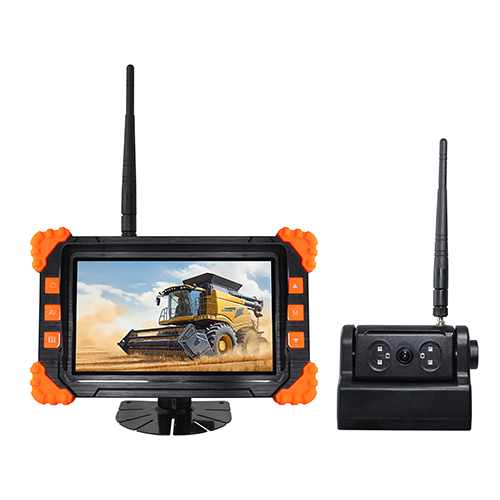Introduction
Agriculture has come a long way from the days of plows and oxen. Today’s farms are powered by cutting-edge technology, and one of the most impactful innovations in recent years is the wireless camera system. Whether you’re operating a combine harvester, tractor, or sprayer, having real-time visual data can transform how you manage your machinery—and your fields.
In this article, we’ll explore how wireless camera systems are enhancing agricultural efficiency, boosting safety, and making farmers’ lives easier. If you’re in the agriculture industry and still relying on mirrors or manual checking, this read could change the way you work forever.
What Is a Wireless Camera System for Farm Equipment?
A wireless camera system designed for agriculture typically includes:
-
Cameras mounted on equipment (front, rear, sides)
-
A wireless transmitter and receiver
-
A high-resolution monitor inside the cab
-
Infrared night vision and weatherproof design
These systems transmit live video feeds to the operator, eliminating blind spots and providing a complete view of surroundings—all without needing complex wiring. With instant visuals, operators can make better decisions in real time, reducing accidents and increasing productivity.
Challenges in Agricultural Machinery Operation
Farm equipment is massive, often with limited visibility and complex movements. Operators face several daily challenges:
-
Blind spots during reversing or turning
-
Unseen obstacles like rocks, animals, or irrigation systems
-
Difficulty aligning machinery during tasks like planting or harvesting
-
Safety risks for nearby workers or bystanders
Traditional mirrors are often inadequate in dusty, muddy, or poorly lit environments. That’s where wireless camera systems shine.
Top Advantages of Wireless Camera Systems in Agriculture
1. Enhanced Visibility in All Conditions
These cameras offer crisp, clear images, even in the worst lighting or weather conditions. With options for night vision and fog-resistant lenses, farmers can work safely day or night.
2. Improved Operational Efficiency
Visual feedback helps operators align their machinery with precision, which is critical for tasks like row planting or loading grain bins. A small alignment error can cost time and yield—wireless cameras help avoid that.
3. Increased Safety
Cameras drastically reduce the risk of accidents by alerting the operator to obstacles or people in blind zones. This is especially important in busy harvest seasons when multiple workers and machines are in close proximity.
4. Reduced Equipment Damage
Avoiding obstacles and accurately maneuvering reduces wear and tear on machinery. That means fewer breakdowns, lower repair costs, and longer equipment life.
5. Easier Maintenance and Monitoring
Cameras also allow farmers to visually inspect equipment components—like checking if a belt is running correctly or if a spreader is clogged—without stopping and dismounting the machine.
Use Cases in Modern Farming
Farmers are using wireless camera systems for a variety of purposes:
-
Combines: Monitor grain flow and hopper levels.
-
Tractors: View implement alignment and field patterns.
-
Sprayers: Check nozzle functions and obstacle avoidance.
-
Livestock barns: Remotely observe animal activity and feeding behavior.
Wireless cameras are also being integrated with mobile apps, allowing farm managers to access live feeds from smartphones or tablets—ideal for large-scale operations.
Choosing the Right Camera System
When selecting a wireless camera system for agricultural machinery, consider the following:
-
Durability: Must be waterproof, dustproof, and resistant to extreme temperatures.
-
Signal strength: Should provide stable video over long distances without interference.
-
Image clarity: HD resolution is ideal for spotting small but important details.
-
Battery life and power options: Preferably with solar charging or direct vehicle connection.
-
Compatibility: Should work seamlessly with your existing monitors or control systems.
Xinvisual Electronics offers systems specifically built for rugged agricultural use, ensuring reliability even in the toughest environments.
Installation Tips
Installing a wireless system is often straightforward and doesn’t require advanced technical skills. Mount the cameras securely, ensure the transmitters and receivers are within range, and connect the monitor to the power source. Professional installation may be advisable for large or complex setups.
Also, periodically clean camera lenses and check connections to maintain optimal performance.
Conclusion
Wireless camera systems are more than just gadgets—they’re essential tools for modern agriculture. They offer real-time insight, improve operational precision, reduce risks, and boost farm efficiency. As farming continues to embrace automation and data-driven techniques, these systems will become even more crucial.
Whether you’re managing a small family farm or a massive agribusiness, the benefits of wireless cameras are clear. The investment pays off in safer, smoother, and smarter farming.


